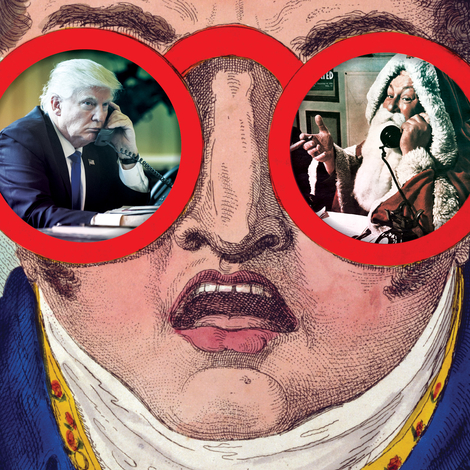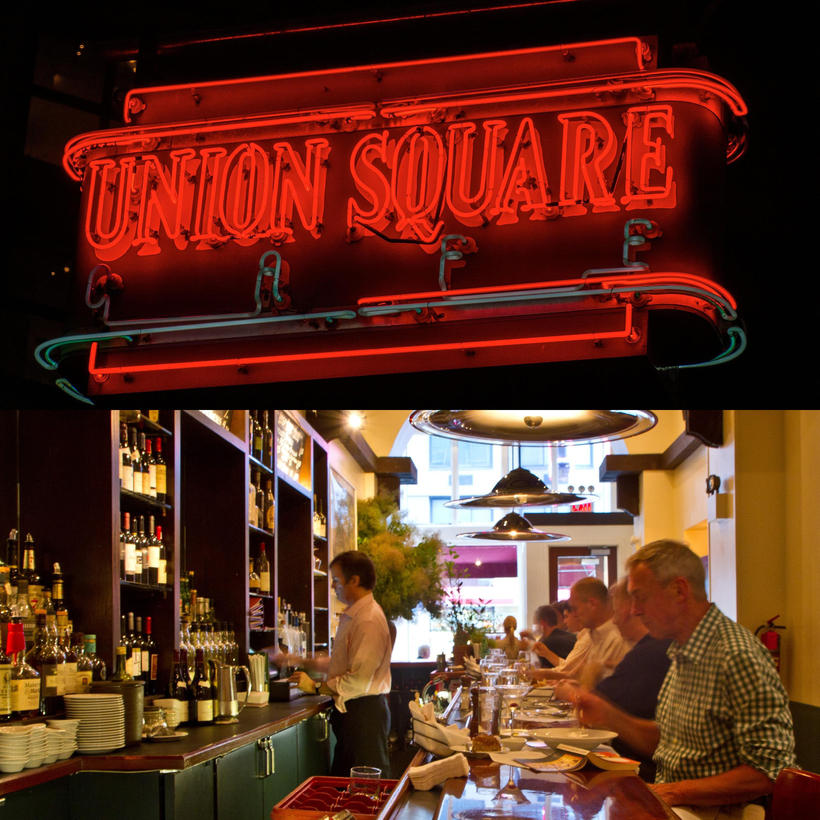Forty years after opening, Union Square Cafe is one of the prosperous patriarchs of the New York restaurant world. But owner Danny Meyer wants to remind you about its days as a scrappy ingénue, naïvely determined to show this gritty city a thing or two about democratic dining. In his eyes, it was less Nancy Meyers and more After Hours.
When he opened the restaurant on 16th Street between Broadway and Fifth Avenue on October 21, 1985, the St. Louis native didn’t know that the Halloween parade ended at Union Square: 10 days later, the bar was four deep with shirtless men, and he found that they’d padlocked a 12-foot papier-mâché erection to the awning. (He was more worried about the New York Times critic Bryan Miller showing up—so worried that he gave himself Bell’s palsy anticipating the review.)

He didn’t know that the Mafia was in charge of the city’s linens delivery until he tried to renegotiate a contract, or that the New York Post would shake you down for Jessica Lange sighting tip-offs. And in a velvet-rope era fresh from Studio 54, he thought that non-boldface names should have access to the best seats in the house.
At a time when the city’s best restaurants were still Le’s and La’s, Young Danny forged ahead, determined to open the kind of place the 27-year-old wanted to eat at.
After moving to New York, in 1981, Meyer sold anti-shoplifting tags. As a young man, he was on the brink of taking the LSAT. (The political-science major wanted to go into journalism or politics and saw law school as the way into the latter.) The night before the test, his uncle’s family took him to dinner at Elio’s.
His uncle, noticing Danny’s dejection, was furious that his nephew would consider doing something he didn’t love: “All I’ve heard you talk about your entire life is restaurants and food,” Meyer recalls him saying while seated in a booth overlooking the restaurant’s Park Avenue South reincarnation, which opened in 2016. “And I still didn’t get it. I said, ‘Should I go eat in restaurants the rest of my life?’ Back then, we didn’t have a culture of dining out. It was not really considered to be a valid entrepreneurial pursuit, especially if you have a liberal-arts education.”
That was Friday. On Monday, he went to the bank of boxes of free weekly papers and, after leafing through them, found the New York Restaurant School, located in a dingy eighth-floor walkup in the Garment District. And so he started learning. For eight months he waited tables at the Italian seafood restaurant Pesca, in the neighborhood that New York magazine had just dubbed “the Flatiron District.” There, he met both his wife, Audrey, and chef Michael Romano, who would later follow him to Union Square Cafe.

Then he found the courage to ask his father, a sales agent for Relais & Châteaux properties, to help him with an internship at a two-Michelin-starred restaurant in Bordeaux. (It lost its stars the day he arrived.)
He spent time cooking and eating in Rome, both solo and while working as a tour guide for his father. He also traveled throughout Italy, constantly writing down what he wanted his restaurant to be like, from the Venetian lights he later had copied to how high the wainscoting should be. “I wanted to open a restaurant that, if only it existed, would be my favorite restaurant,” Meyer recalls.
The jotting continued in New York as he walked miles to check out neighborhoods and try restaurants, stopping for a drink and a bite in each one and asking himself what he’d do—or do differently. (First on the list: As a solo diner, he was often seated at the bar, which made him uncomfortable both socially and physically, due to the curved lip. He knew he wanted to design a bar where solo diners could actually dine.) When a friend’s mother—a real-estate agent—showed him an affordable space in what she promised was an up-and-coming neighborhood (despite the chalk outlines of murder victims he’d seen on mornings in nearby Union Square), he knew he’d found his space.

Over the next 30 years, the Union Square Cafe became that rare New York thing: a welcoming restaurant with delicious, approachable, seasonal food that was actually a good value. (Meyer was enraged by the 80s trend of $18 pasta entrées and set out to return them to their first-course place.)
Native New Yorkers were not hired as servers, and applicants had to answer questions of Midwestern importance. (Hellmann’s or Miracle Whip?) Early critics were spooked by their niceness: Seven Days magazine praised the food, but said it was like being waited on by a Stepford wife. “People kind of mistrusted the hospitality,” sighs Meyer, still visibly pained by the review.
But the warmness worked: at any given service, the tables were filled with loyal diners, from neighborhood couples to solo bar diners to actors. The restaurant was also home to a then burgeoning downtown publishing-and-advertising scene. Roger Straus, of Farrar, Straus and Giroux, brought his writers and editors to Table 38 every lunch, including The New Yorker’s William Shawn, for whom the servers would go across the street to buy cornflakes.
Editors Judith Jones, Paul Gottlieb, Morgan Entrekin, and Gary Fisketjon were regulars. And a year after opening, the editors of a new magazine called Spy made themselves at home “every single day, until I banned smoking in 1990, and then I was fine with Kurt [Andersen], but Graydon [Carter, a Co-Editor of Air Mail] wouldn’t talk to me for at least 15 years,” Meyer says with a smile.
And then, all of a sudden, Union Square Cafe became a place for foodies too. (Meyer fondly remembers his lunch with Julia Child, who put away two bottles of Beaujolais and two servings of oxtails.) “I would seat people—not on top of each other, we’re doing business—but close enough that they went, ‘Oh, I guess I’m in the right place, because this is where other authors eat, chefs eat.’ All that planting, like seeds and like gardens, and it was so much fun.”

Meyer did that for 30 years, until the restaurant found a much larger home. Today, chef Lena Ciardullo has evolved the menu—keeping the garlic potato chips and, at lunch, the chicken Milanese—but the service (and some of the art) retains its DNA. And if you head up to the balcony, you’ll find Danny Meyer’s favorite spot: a six-stool bar made from half of the original.
“Just put your hands on this bar,” he politely prompts. “When I touch this piece of mahogany, you have no idea how this takes you back. It’s right in this wood.”
Christine Muhlke, a former editor at The New York Times and Bon Appétit, is a co-author of Wine Simple and the forthcoming Wine Simple: Perfect Pairings with Le Bernardin’s Aldo Sohm. She is also the founder of culinary consultancy Bureau X and the creator of the Xtine newsletter


